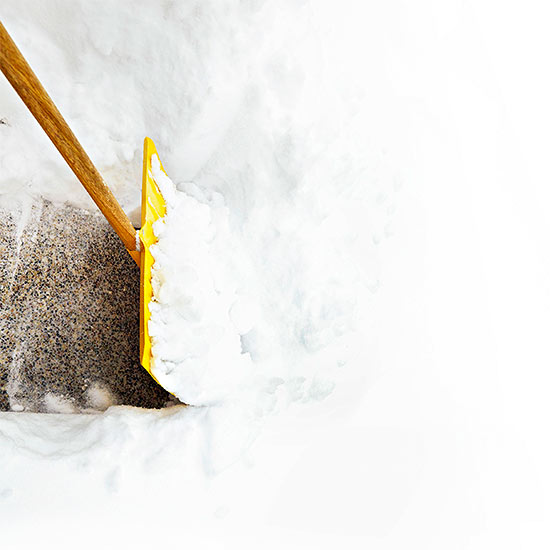






While there are a number of de-icers to consider, they aren't created equally, nor are they perfect. Before you use a de-icer, determine whether coarse sand or another abrasive, such as sawdust, will be enough to provide traction and make both sidewalks and driveways less slick. If so, they are less harsh than de-icers that are chloride based.
Salts (chlorides) are a common ice-melting agent, but they aren't friends to plants. When buying a de-icing product, check the label for information on its effectiveness at varying temperatures. Some work better at lower temperatures than others.
One of the most common de-icers available is sodium chloride, also known as rock salt. It's inexpensive, which increases its popularity, but it is harmful to plants, vehicles, and concrete. Calcium chloride will melt ice and is less harmful to plants than rock salt. It is corrosive to concrete and metal and can cause skin irritation. Magnesium chloride can be a good option at about 1-2 pounds per 100 square feet.
Another option is potassium chloride, also called muriate of potash, which is used in fertilizer. Follow directions to ensure less harm to plants. Calcium magnesium acetate is the most expensive but when used correctly, it is low in toxicity. Avoid fertilizers as de-icers.
continue reading belowThe best bet is to combine less than 5% of one of these de-icers with skid-proofing substances, such as sawdust, sand, kitty litter, small gravel or straw. For example, 1 pound of de-icing salt mixed with 50 pounds of sand can be effective on walks and driveways without adding too much salt to the landscape. The salt helps melt the ice, while the other material will help keep a surface safe after the salt has dissolved. Stick with recommended amounts to minimize harmful effects on plants, concrete, and other surfaces. Salt on the bottom of your shoes can harm carpet and tile inside the house.
For those who live in areas where salt spray from passing cars ends up on your landscape, a couple of measures might be needed. One is to provide a barrier, such as burlap wrap or snow fencing. Another is to select plants that are more salt-tolerant. Plants that have hidden or submerged buds, thick surface wax, numerous and tightly arranged bud scales, fuzzy buds, or sticky resin coated buds are more capable of preventing salt spray from penetrating.
Another strategy when dealing with snow and ice is to try to avoid shoveling or piling treated snow onto your landscape. When the weather warms, the thawing of the snow and winter rain can reduce salt accumulation in the soil, but if early spring weather is dry, consider rinsing off plants to eliminate residual salt and irrigating to help flush salts from the soil.
Learn how to keep the rest of your garden safe this winter.
Copyright © www.100flowers.win Botanic Garden All Rights Reserved